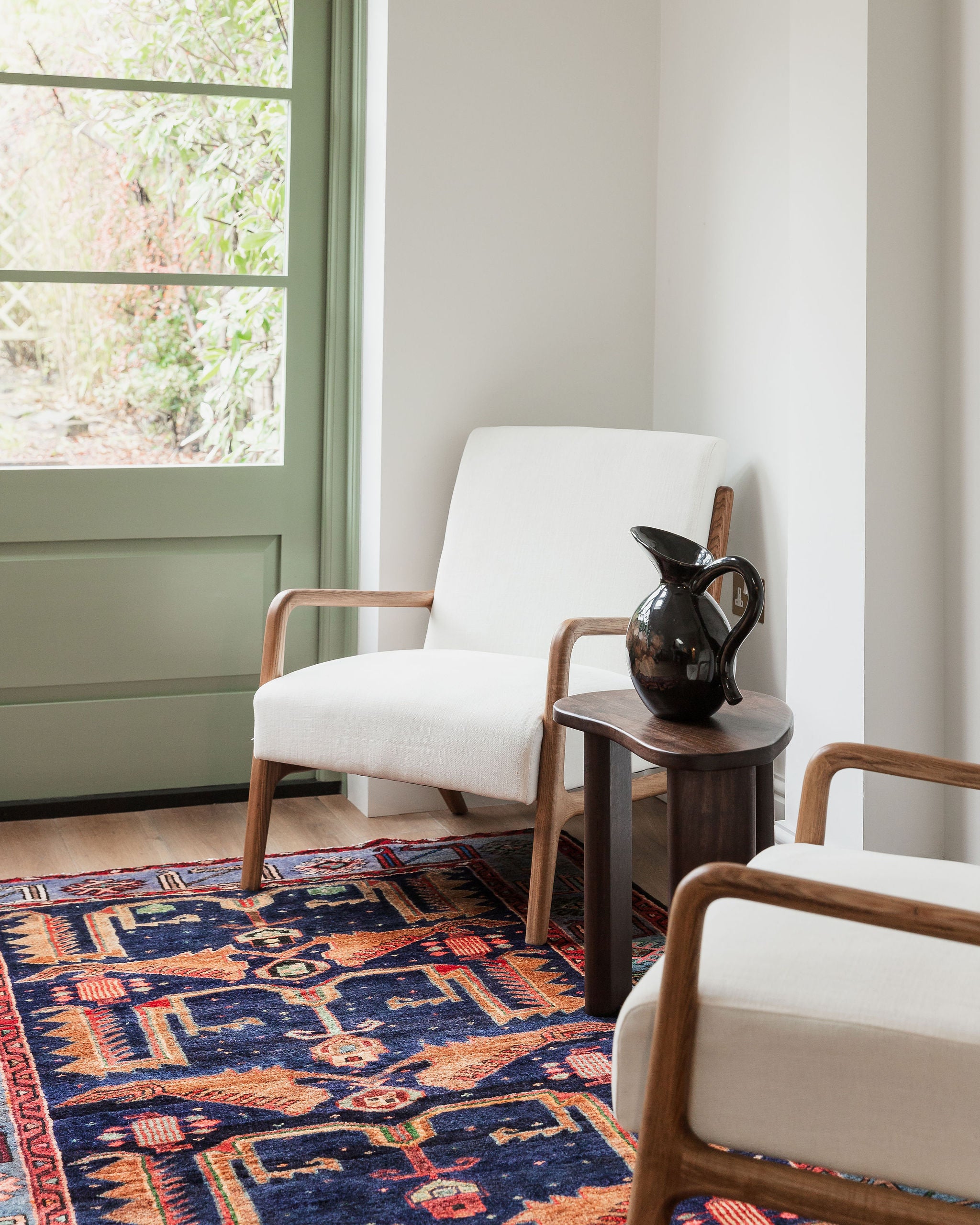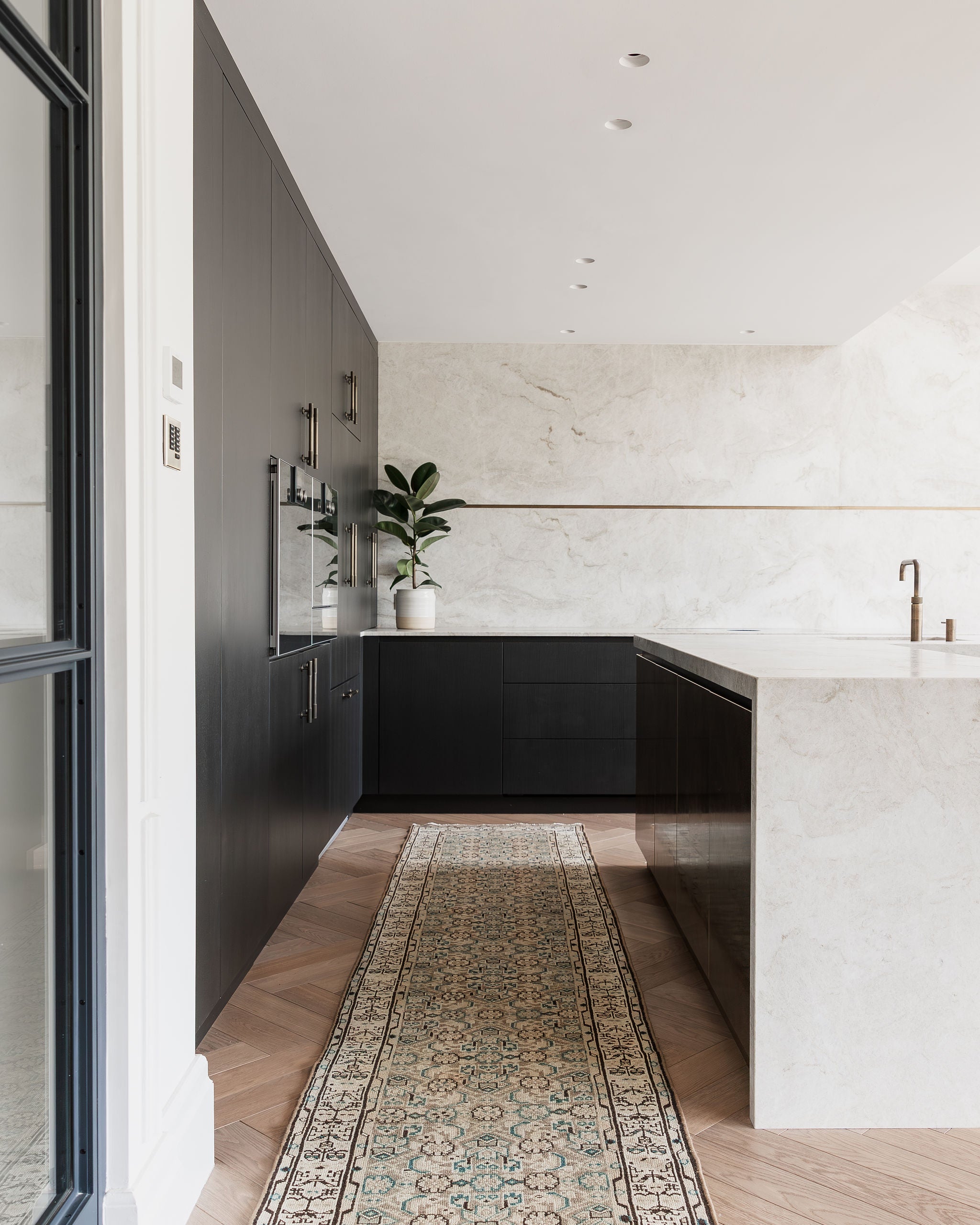A Guide To Rug Cleaning
Two questions that come up a lot when it comes to handmade rugs, Persian rugs in particular, are:
How do I keep my Persian rug clean? Does it need to be done professionally?
What do I do if my Persian rug gets damaged and needs to be repaired?
Hopefully, I can clear these points up really nice and simply for you. If you still have burning questions, do just get in touch, I'd love to hear from you.
Let's start with keeping your rug nice and clean. This is split into two categories: the EVERY DAY cleaning and the PROFESSIONAL cleaning and repairs.
1. EVERY DAY CLEANING
What to do if you spill something:
The key to removing spills is to act immediately. Blot (never rub) the spill as quickly as you can to remove moisture.
If there is a lot of liquid, remove it with a spoon as gently as possible.
Little trick: mix a small squirt of fairy liquid with warm water and let the soapy foam rise to the top. With a soft cloth (preferably without dye in), scoop up some of the foam and dab it onto the stain (again, don’t rub!)
If you don't get it in time, and there is a stain, DO NOT try to rub it out and spray it with chemicals. Simply give a professional a call and it can be repaired properly, without causing further damage. You can always contact us here at Lilla Rugs and we will arrange this for you (even if you didn't buy the rug from us).
How to keep it clean on a weekly basis:
Vacuum lightly (on a low setting) to prevent dirt particles from becoming embedded in the fibres of the rug. Try to avoid vacuuming the fringes as they can get damaged quickly.
Every now and then you should also flip the rug over and vacuum the underneath.
New rugs, Moroccan Berbers in particular, can often shed a bit of fluff. This is from excess fibres that were not properly attached to the yarn during spinning. It’s completely normal, don’t worry! It may just mean that for the first few months you’ll need to vacuum up the fluff a little more often. It will subside.

Worried about the colour fading?
Lilla Rugs have a high resistance to fading. However, there are no dyes completely unaffected by sunlight. If your rug is by a window that lets in strong sunlight, over time the colours will soften. The best way to prevent this is to turn the rug every now and then so that at least you keep any fading evenly distributed.
What if you notice a loose thread?
This will rarely happen, but should you have any loose threads, do not pull on them. Simply cut the loose end with some scissors. You will not damage your rug this way.
2. PROFESSIONAL CLEANING & REPAIRS
We always recommend that you get your handmade rugs professionally cleaned every 3-5 years (dependent on how high traffic the area is. This is because there will always be a small amount of dirt that gets into the foundation of the rug. If you let this build up for too long the dirt can start to go hard. If it goes hard and you decide to fold the rug up at some point, you can risk a break in the foundation.
So how do you do this? It's super important that you find the right people to clean your handmade rugs. There are lots of rug cleaning companies that use machinery that is too harsh for handmade rugs, so these need to be avoided. Large warehouses, that are both not suspiciously cheap, nor crazily overpriced are a good place to start. We do offer a reliable and reasonable cleaning service at Lilla Rugs, so if you'd prefer, just get in touch. The same applies for any damages that may need to be fixed. The two services come hand-in-hand. Whoever you use, you should ensure that they take the following steps:
a) Consultation
Before going ahead and cleaning your rug, it would need to be assessed to ensure there isn't rotting or too much damage to repair. The level of clean needed (also dependent on the size and quality of the rug), as well as the repair of any damages, would need to be costed up first. To get a rough quote, you could send in imagery, but for a final quote, the rug would need to be sent or brought in.
b) Removal of dust and dirt build up
No matter how clean you keep your rug, with years of use there will be a level of dust and dirt that settles into the rug foundations. The dust and dirt will need to be beaten out of the rug, usually with a 'rug beater' machine that vibrates at a gentle enough level to not cause any damage but effectively remove all the dust and dirt. Sometimes this process is done by hand.
c) Removal of stains or marks
If there are any stains or marks on your rug, which is likely, these will be treated. If a stain is too severe (think red wine on a cream rug!) there is no guarantee it will be completely removed. If the stain is really bad, do get it into someone as quickly as possible. The longer you leave it, the harder it will be to remove.

d) The main clean!
After the dust, dirt, stains and marks have been dealt with, the overall rug will be properly cleaned. Special cleaning shampoos are used that preserve the colours of the rug and avoid fading. The wool's natural lustre will be restored. Usually, this process is done with a slow speed rotary cleaning machine, but it is also often done by hand if the rug is particularly old or delicate.
The shampoos are then rinsed and any moisture is vacuumed out of the rug. This also extracts any remaining dust or dirt from the rug.
e) Drying
Once sparkling clean, the rug is left to dry naturally, sometimes with the help of a gentle fan. Sometimes this can take quite a few days, completely dependent on the material of the rug and the thickness.
f) The final touches
This last step should never be overlooked. Once the rug is dry, the cleaner will make sure any loose strands are clipped, the fringes are treated and a final lustre wash is done to awaken the wools natural oils. E-voilà! Your rug will look sparkling clean.
Having made sure your rug is carefully looked after, you might feel ready to add to your collection. A carefully positioned rug can make a small room appear larger! For any further questions, check out our FAQ section!









